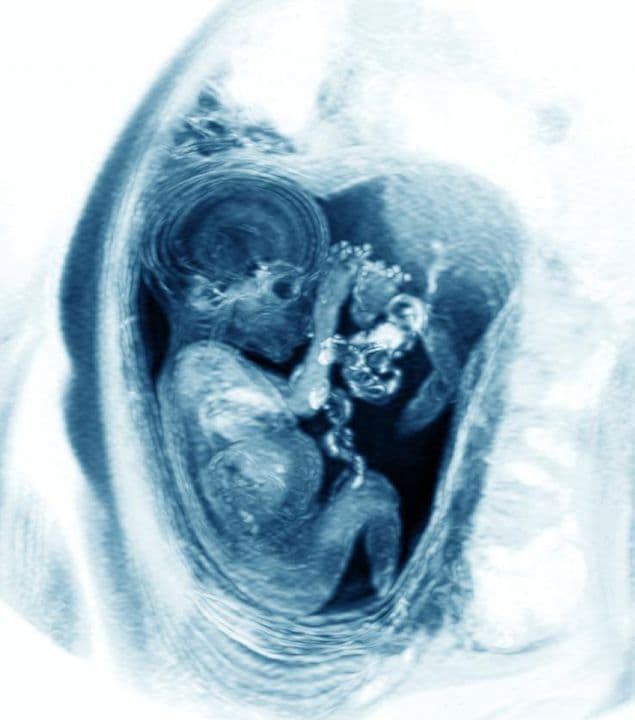fetal-development
39 weeks and 2 days pregnant

Published: 29/08/16
This close-up 3D ultrasound view shows that this baby’s earlobe is particularly prominent. The dark flecks around the ear look like hair, but are in fact shadows (although many babies have hair at this stage).
Your baby’s bones have hardened to a certain degree, but this process will continue right up to the teenage years!
Your baby’s skeleton has gradually transformed, from soft cartilage to bone, a process called ossification. This process starts in the centre of each bone spreading outwards. By the end of pregnancy, ossification is complete along the length of each bone but the ends of the long bones and the tips of the bones in the fingers and toes remain as cartilage. This is necessary to allow later bone growth as the child develops.
The bones in the upper part of the skull are slightly different, developing from membranous structures rather than cartilage. These do not fully fuse until several years after birth and remain separated from each other by connective tissue. This connective tissue forms areas called sutures and where more than two bones meet, wider spaces called fontanelles. Their function is to allow space for movement or “moulding” between the skull bones, making it easier for the head to descend into the pelvis during labour. It is also these suture lines and fontanelles that help your midwife determine the position of the baby’s head during labour.
After delivery you will notice that your baby’s head shape is often elongated, but this soon changes as the bones realign back into their usual positions.

Doctor Q&As from Parents like you
This MRI (magnetic resonance imaging) scan shows a fetus approaching full-term. The baby’s brain, spinal column, heart, liver, and lungs are visible, and the umbilical cord can be seen to the right of the image.
The thought of eating the placenta may turn your stomach, but some women choose to do exactly that. The organ is revered for its spiritual properties, and devotees of placentophagia believe the nutrients it contains, including vitamin B6, will help to prevent them developing postnatal depression. However, the evidence in favour of the health benefits of consuming a placenta is purely anecdotal.
An alternative and less controversial custom involves dressing the placenta with herbs, then burying it at a party to celebrate the baby’s birth: this is thought to be an important bonding ritual for the extended family.
Art is another option: press the placenta against a piece of paper and you’ll get a tree-shaped print.
Some cultures use the dried organ to make medicinal herbs.
Not sure how to cook placenta? Well just look online and you’ll find plenty of placenta recipes, from pâté to lasagne, but, understandably, these might not be to everyone’s taste.
Be the first to support
Be the first to share
Related Blogs & Vlogs
No related events found.